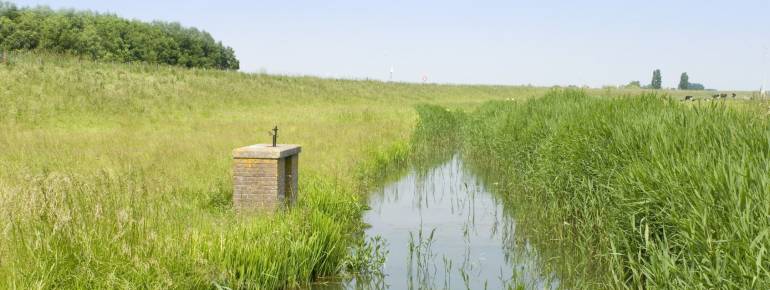Water Board De Stichtse Rijnlanden: integrated water management using satellite information

The organisation
The Water Board De Stichtse Rijnlanden is one of the 26 regional Dutch water administrations in charge of flood control, water quantity and quality management, the treatment of urban wastewater, the maintenance of pumping, waterways and flood defence structures. The Board serves an area of 82 000 hectares that cover most of the province of Utrecht and a small part of the province of Zuid-Holland. The Board’s mission is to ensure safe dykes, clean surface water and correct water levels.
The challenge
The Water Board manages the allocation of a limited supply of freshwater between agricultural, municipal and environmental uses – which may sometimes conflict. Planning such an integrated water management system relies on information related to a multitude of issues, such as water supply and demand, irrigation requirements, water discharge and treatment, water quality, etc. It is therefore important for the Water Board that the water balance is monitored precisely. Evapotranspiration, the process of water evaporation from the soil surface and through plants, is one factor that can lead to significant loss of water from drainage basins. Until adopting the satellite-based solution, the estimation of evapotranspiration relied on calculations from state monitoring reports, which were not always sufficiently accurate.
The satellite solution
The Water Board De Stichtse Rijnlanden now purchases daily satellite information of evapotranspiration and crop growth from eLEAF, a Dutch value-adding company. This near real time information is delivered online covering 250x250m per pixel of its management area. To share experiences and for cost effectiveness, the information is purchased together with other Dutch Water Boards. This resulted in an organised group, SAT-WATER, which will ensure the continuity of the service in the future.
The result
Satellite data enable the Water Board to estimate the water balance at different spatial and temporal scales more accurately than before, which results in better-informed decisions about water allocation in the region and therefore in a sustainable use of this scarce resource. The use of the satellite images is relatively inexpensive, not only thanks to the mutualisation of costs among the participants, but also when compared to field measurements. The information greatly enhances knowledge on water systems.
“The focus for the next few years is to increase the types of satellite information we use on additional parameters (for instance soil moisture), and to increase cooperation with the other 26 Dutch Water Boards.” Joost Heijkers, Water Board Hoogheemraadschap De Stichtse Rijnlanden, one of the nine waterboards involved in SAT-WATER.

